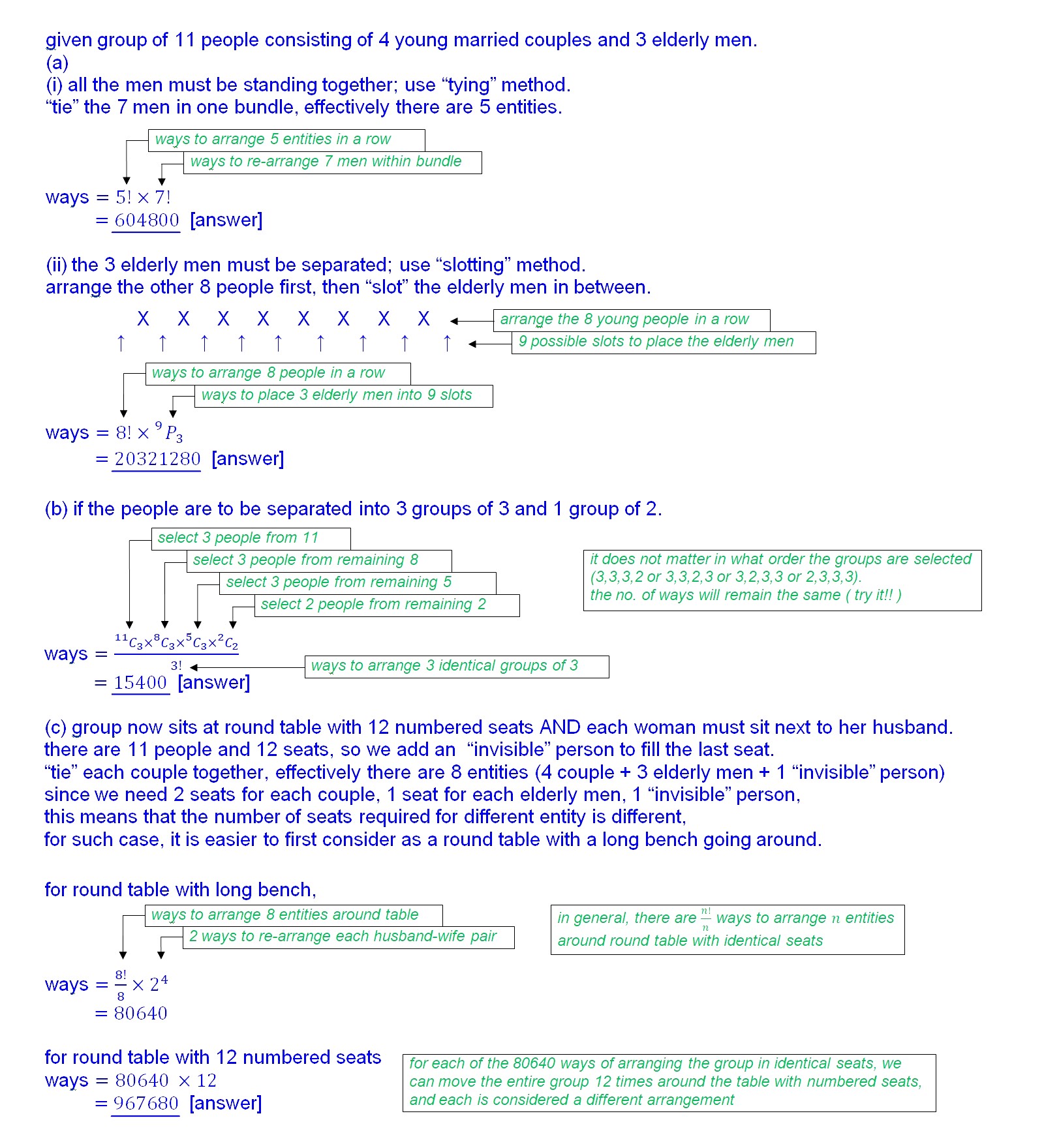Ask Singapore Homework?
Upload a photo of a Singapore homework and someone will email you the solution for free.

See 1 Answer
done
1 Upvotes
clear 0 Downvotes
for part (c), I do not agree with the answer given.
this part is tricky because we need to tie each husband and wife pair together, and each pair require 2 seats, while the others required only 1 seat.
it is easier to treat the problem first as arranging everyone on a long round bench, then multiply the answer by the number of seats.
I believe the answer written in red ink for (c), is the no. of arrangements for un-numbered identical seats. so need to multiply by 12 again for final answer.
this part is tricky because we need to tie each husband and wife pair together, and each pair require 2 seats, while the others required only 1 seat.
it is easier to treat the problem first as arranging everyone on a long round bench, then multiply the answer by the number of seats.
I believe the answer written in red ink for (c), is the no. of arrangements for un-numbered identical seats. so need to multiply by 12 again for final answer.
Date Posted:
5 years ago






… in general, number of ways to separate n entities into 3 groups of a, b and c entities is
n!/(a!b!c!)
… in this case, the 3 groups of 3 are interchangeable, so it would be …
[11!/(3!3!3!2!)] / 3! = 15400
(different method, same answer)
… in order to verify the correct method of calculation, one possible way is to make a complete list of the all the different arrangements, for a smaller and more manageable size group. with the copy, paste & replace tools available in Word and Excel, this can be done quite easily.
… have tried listing different arrangements for …
- 1 married couple, 3 elderly men in a table with 6 numbered seats (total 288 ways)
- 2 married couple, 2 elderly men in table with 7 numbered seats (total 672 ways)
… and have compared against calculated values obtained by using the same method in the solution here. the no. of arrangements obtained by listing and by calculation matches!
… am quite confident that the method used here for part (c) is correct and answer 967680 is correct.